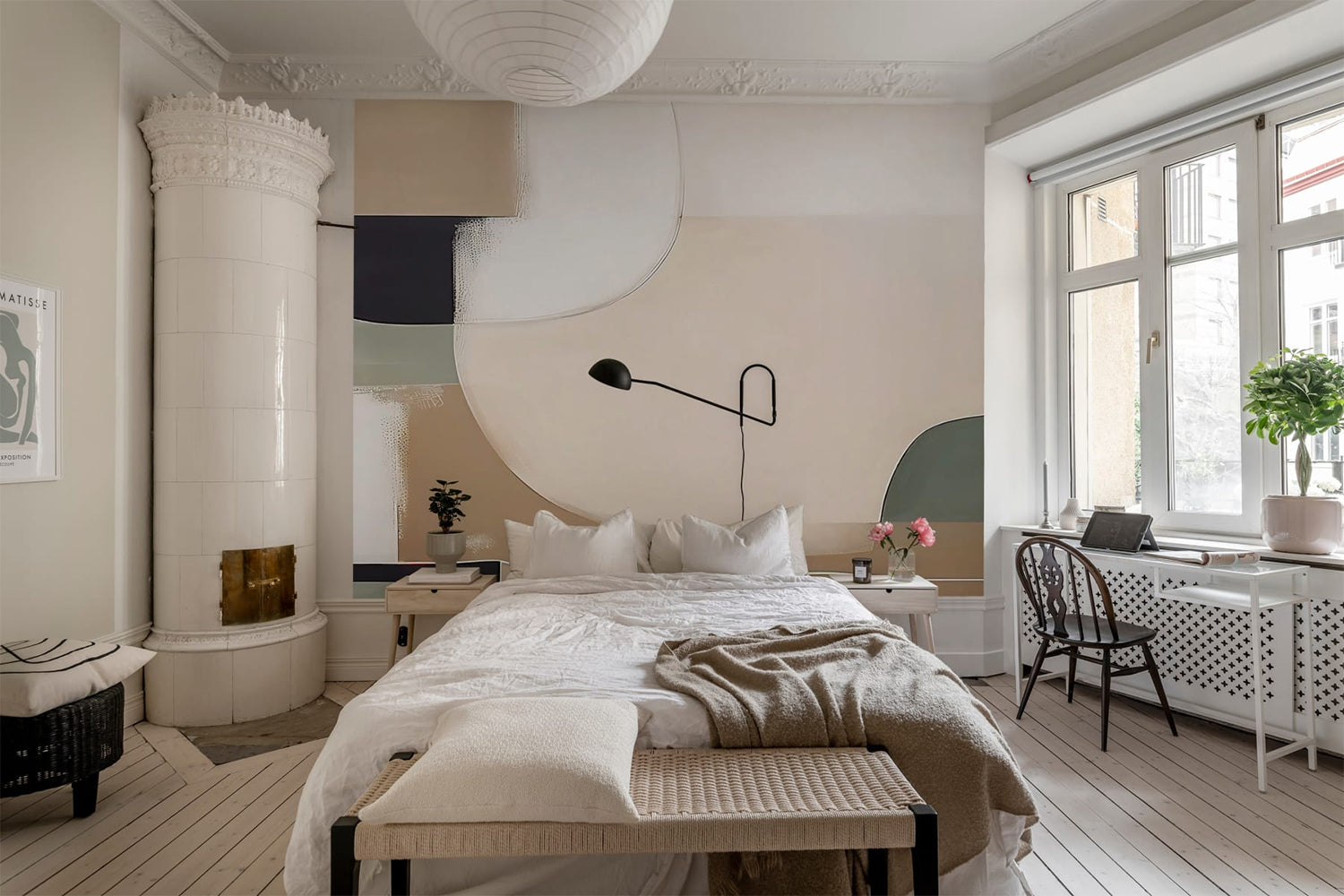
We all know that the dining room is more than just a place to eat; it is also a place where people gather to make memories, tell stories, and share stories. We are thrilled to spotlight Audrey, the brilliant designer behind Studio Abby, who has a true gift for transforming dining rooms into intimate havens. Audrey’s approach to design feels like a warm embrace—she mixes style with comfort in a way that makes every room feel uniquely yours.
In this feature, Audrey shares her favourite ways to personalise dining spaces, clever lighting tips, and her go-to furniture and decor brands. Her ideas will inspire you to make your dining room your own, whether you’re creating a cozy family area or an elegant place to host guests.
What are some effective ways to add a personal touch to a dining room?
Lighting fixtures for sure! It could be something as straightforward as a pendant lamp with a well-planned splash of color, or it could be a statement pendant with a sculptural shape and design. Wallpaper is another fun and effective way to personalize your space and add visual interest. For smaller walls, I prefer to use strong colours or more elaborate patterns.
For larger walls, I gravitate towards eye-catching designs in muted tones to achieve a cohesive, balanced look that complements the furniture and fixtures.
If you love standout designs or bold colours but worry they might overpower the room, try using the wallpaper on the top half of the wall—it softens the impact while still making a statement!
The selection of furniture and soft furnishings, such as a suitable rug under the table, as well as decorative elements like artwork, prints, and even portable table lamps that you can place on the table when hosting, are additional ways to add a personal touch. Dining furniture doesn’t have to always be purchased as a “set”. If you have a particular table in mind, don’t be afraid to mix and match chairs with it! Find something common between the table and chair(s) – it can be as simple as a small design element, colour, material, to help guide you pairing the furniture and bring it all together.
We have noticed how inventively you light dining rooms.
What are important factors to consider?
Dining area setup (static or modular)
First consider whether you’ll frequently reposition the table. If your habits revolve around a more flexible use of the dining space, then recessed down-light or surface mount lamps should be considered for general illumination of the dining area.
If the dining setup is fixed, I’d recommend a pendant lamp that hangs over the table for a more intimate, communal vibe.
Lighting positions
Statement pendants are best positioned about 1.7m – 1.75m away from the floor. This prevents you from accidentally knocking into the lamp when reaching over the dining table, and also works well with most ceiling heights.
Providing warmth The temperature of the lighting above the dining area is also very important. You should choose a warm-white color temperature of 3000K to give the room an inviting glow and to make it easier to see food on the table.
Styles
It is best to use neutral colors and finishes for hanging fixtures in a dining room for longevity and ease of matching the surrounding furniture. Choose a fixture that complements the dining room furniture in a proportional way first, as there are many different styles to choose from. Style-wise, be adventurous and mix it up, or choose to stick to the overall theme of the space. For example, a dining room with a botanical aesthetic would pair well with a more rustic and textured hanging lamp; but can also be easily complemented with designs that are more contemporary.
Key guidelines and considerations when it comes to selecting the ideal hanging fixture would be scale and proportion, finishes (whether a fabric shade, metal, wood, acrylic, paper etc) and of course, the overall form of the fixture.

